For one group of mountain bikers, the winter months bring an extra dose of camaraderie, friendship and stiff competition.
Words by Nick Hamilton, photography by Richard Baybutt
Long cold dark nights, rain and mud. Flurries of snow and biting winds. Snowballs in the face. As mountain bikers, these are the facets of winter which tend to have us putting another log on the fire and flicking over to the next page of our favourite riding mag, dreaming of when the clocks will change and the trails might dry out a bit. The committed ones are out there with shovels and trail tools shaping summer dreams, investing in their future-selves, but what about the rest of us? Bike washing, night rides and booking riding trips? What else could we be up to?

Faced with these difficulties but fuelled by a desire to keep riding and not give in, a group of us Sheffield riders devised a plan that has kept us out in the dark in all conditions since 2010. As with most good ideas it fermented in the pub after a few post-ride pints and what began as a possibility evolved into a movement. Dual. It rules, and we think you should be doing it too. Let me explain why.
Clocks go back, stopwatches comes out
Each year when the clocks fall back, our ritual begins. We meet every two weeks at locations dotted around Sheffield, and plant a series of parallel poles in the ground to mark out a course. Bike lights and AliExpress torches are strapped to more poles and set to illuminate each corner. People arrive in waves, with practice beginning at 8pm to allow us to get the feel for both lanes and adapt to the inevitably increasingly slideways conditions. At 9pm racing starts with the blow of a whistle. Each pairing of riders races head-to-head twice, once in each lane, with the fastest combined time moving through to the next round. Runs normally last 15 to 30 seconds. We use a stopwatch and a spreadsheet to keep track of progress with old hands taking turns to put their fingers on the buttons when it’s not their time to race.
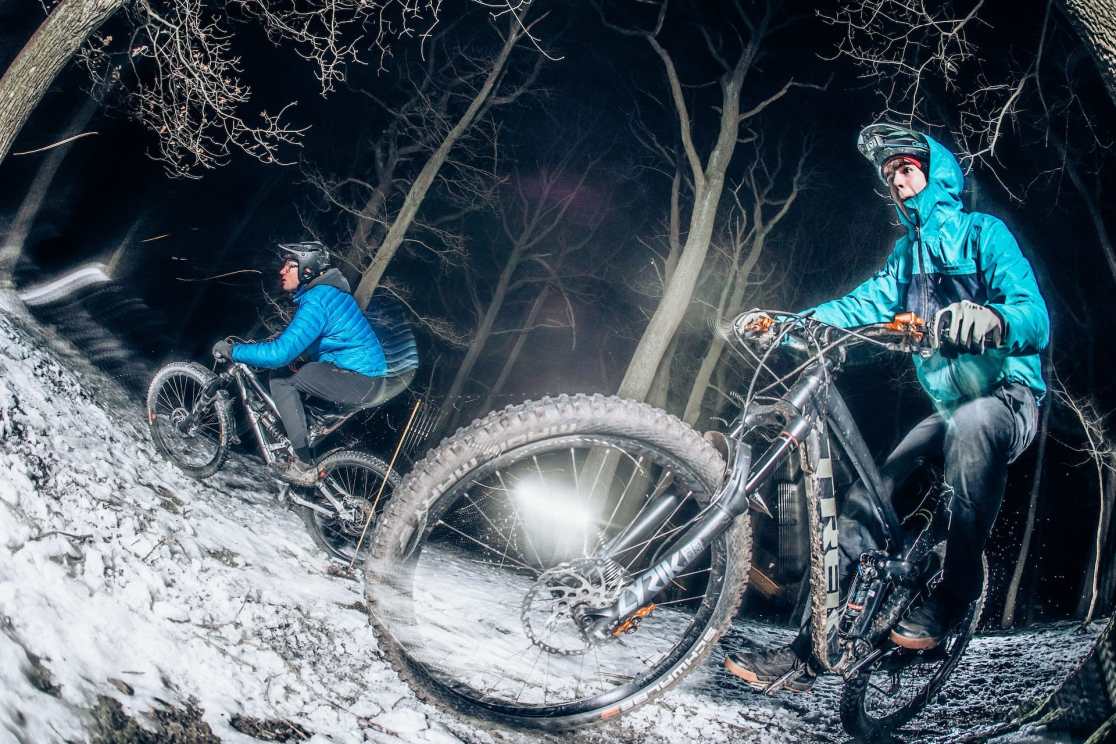
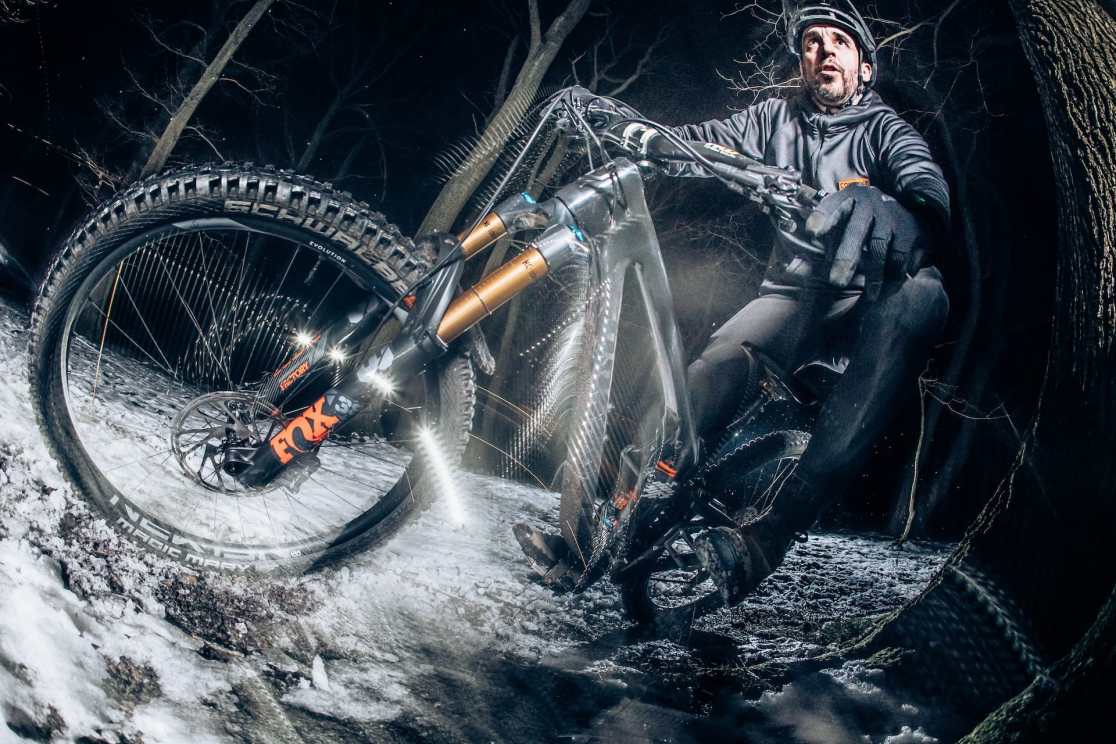
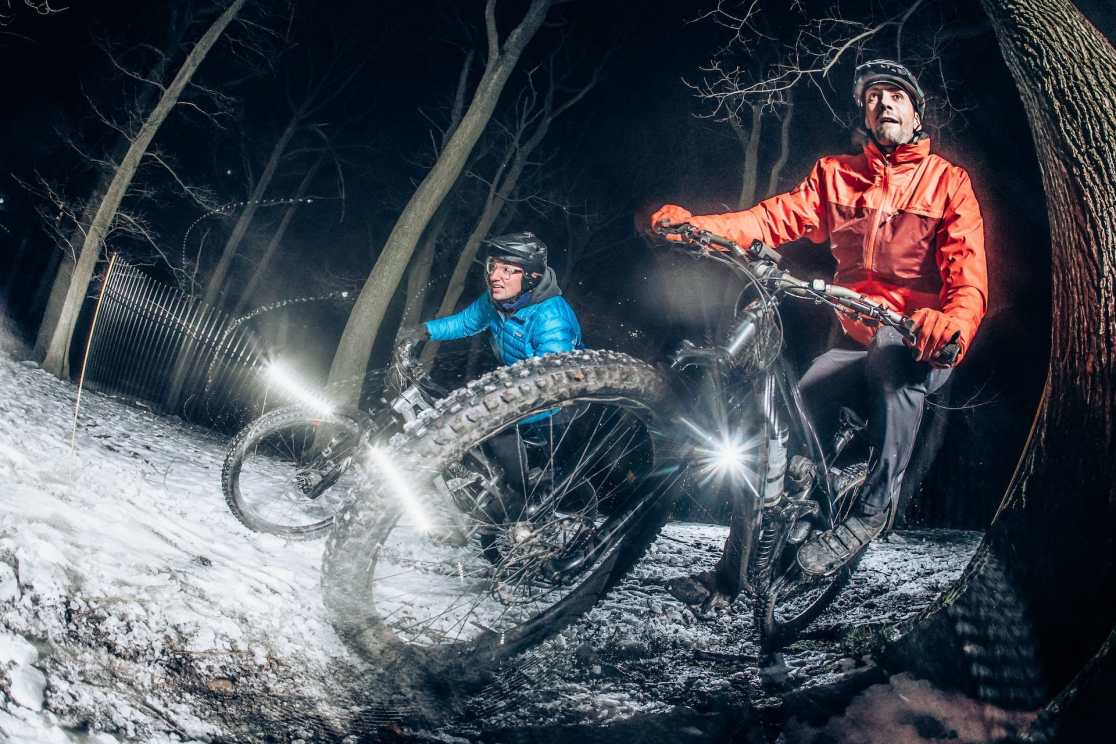
We run a knockout format, moving from heats, through quarters and semis towards the big and little finals depending on how many riders turn up. Those who make the finals are running back up the hill repeatedly, getting knackered, but it’s a very good problem to have. Race entry has remained the same since the first race: two quid in the pot and a random prize for the bag, with a suggested minimum donation of tinned fish. The quids are used to buy race essentials like new lights and replacement poles as the poor things have a very hard life. After finals, we collect up all the poles and lights and gather around the prize bag. As everyone puts a prize in, everyone gets a prize out of the pile with the winner getting first pick. Everyone also gets their name read out and a cheer from their fellow racers. The unintended consequence of this simple ceremony is the sense of community it has fostered. Everyone finds out each other’s names without having to ask and we all celebrate each other’s successes or lack thereof. Catalysed by the amount of time spent spectating after you’ve been knocked out, friendships, businesses and careers have been forged from between our poles. The winner gets 32 Gnar points, second 31, and on down the standings which contribute to the season’s overall position.
Latest Singletrack Merch
Buying and wearing our sustainable merch is another great way to support Singletrack
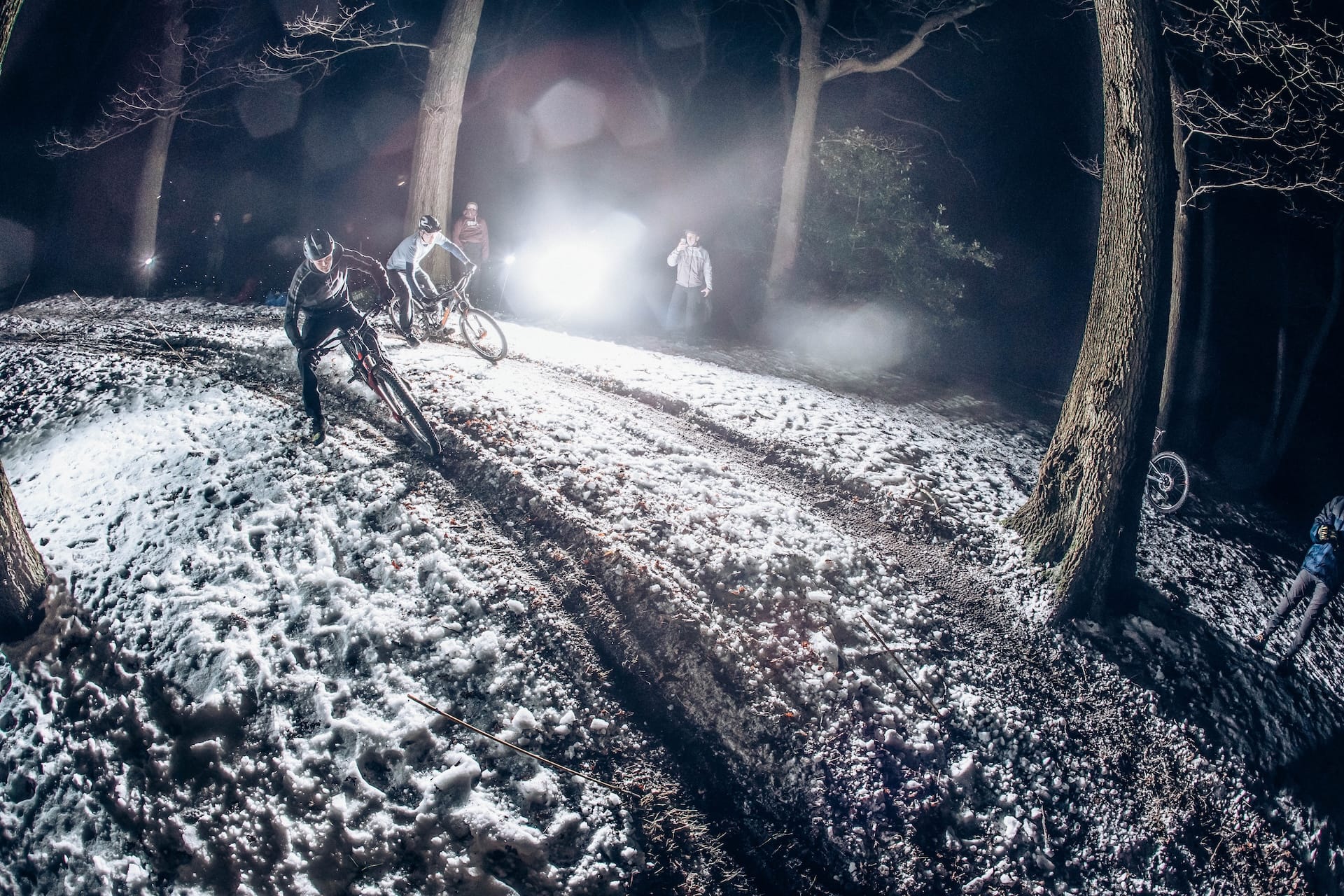
Anything but tarmac
The locations we race at have remained familiar over the years but there’s always a new one added in over the ten-race series. For the first two years, we never left my local park, racing below some trees on hard-packed, leaf-covered mud. Variety came from how the posts were set up and what natural features and trees were included. We still race there regularly and I consider it our celestial home. Our mates’ races are the equivalent of us putting down jumpers for goalposts and kicking a ball around for a game of football, we just happen to use posts and bikes to frame our competitive desires. We’ve never had any trouble or problems and the couple of times the police have turned up, they’ve apologised for having to attend and have been fascinated by what we’re up to. The local council know what we’re doing and are happy.
We’ve been lucky enough to race some amazing locations over the years – farmers’ fields, mates’ woods even the floor of Cotic’s new HQ. The latter came about when Richard Baybutt (#28), the talented ’Tog who took the very photos surrounding these words, pitched the idea to owner Cy Turner (#31) who went for it. I’ve never been more nervous about a Dual race and was sure it wasn’t going to work. What went down proved the versatility of the format and the competitive nature of the riders. It was one of the most fun Duals we’ve ever raced, despite being on a completely flat polished concrete floor. Our preferred surface is steep grass as it’s just so fast and confidence-inspiring until it cuts up and gets slippy, but anything will do. Loam is amazing, snow and ice work surprisingly well (see pics!) but I have now satisfied my exploration of bitumen. We’ve fully tested the idea of ‘Tarmac Terror’ and don’t need to go back there again, much to everyone’s relief. That said, our local tarmac pump track is on the cards again this year as its flood-lit berms make for exhausting racing.
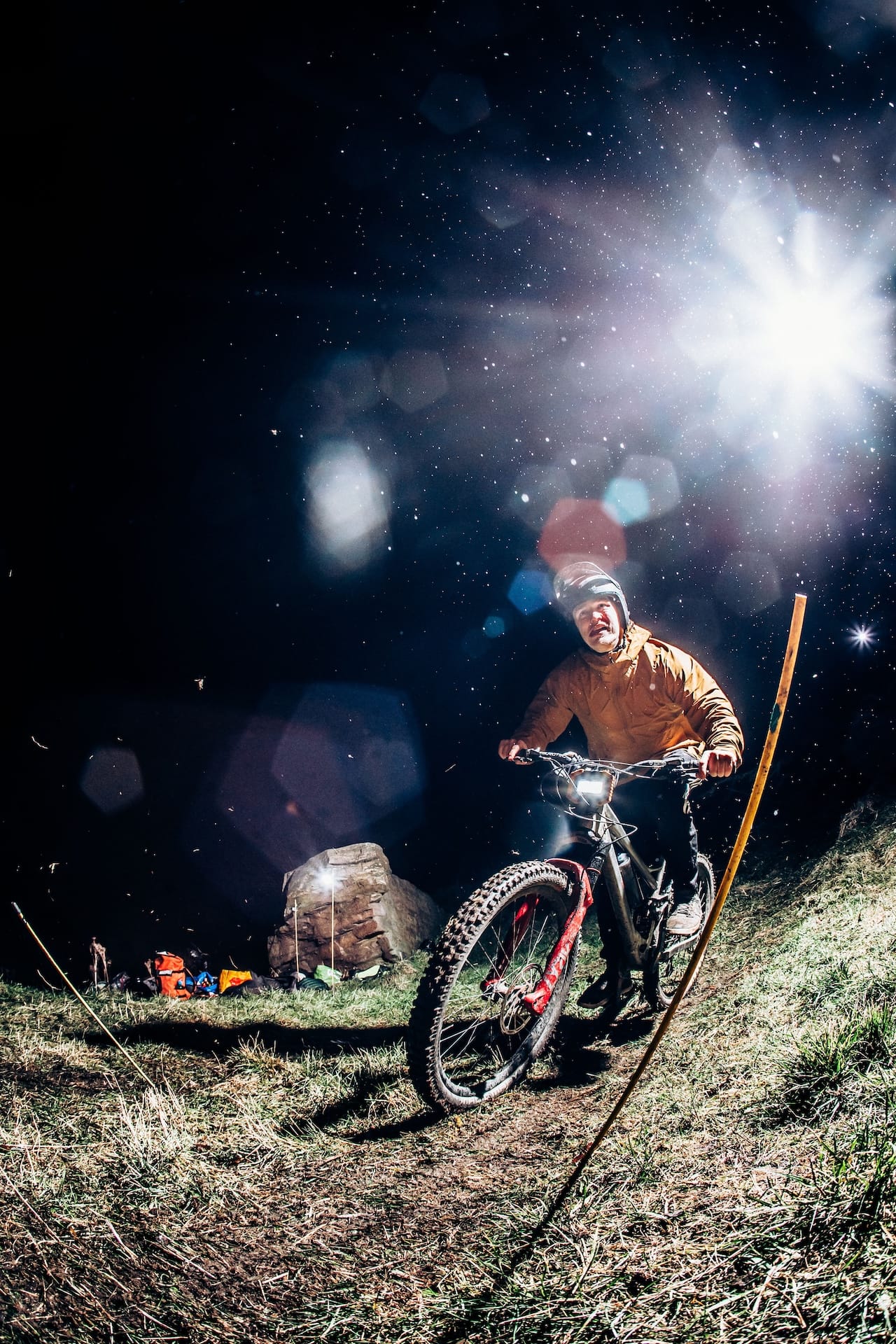
The first rule is… bring fish?
We’ve always operated on a word-of-mouth basis; it’s a mates’ race so mates bring mates along to race for their first time. The only rule is ‘no dicks, as we have plenty of those already’. I’ve kept a record of all the races we’ve ever done, and each person is given an ID number to make the spreadsheets work – for example, I’m #1. To date, we’ve had 279 different people race at least once, which includes 40 lasses and my own son (#243), who was 9 at the time. It’s a constantly evolving cast of characters, but some have never stopped. The Pearsons, brothers Chris (#10) and Tim (#20), have been racing since the start and still turn up every week without fail. Both are moto trials riders and amazing bike handlers, dominating from the outset and always at the sharp end of the results. Early on, they did so well that they inspired the introduction of an eponymous rule: The Pearson rule, which changed the way we set up races. To give other riders a chance of reaching the final we seed everyone based on their position in the overall standings. Contrary to British Cycling Dual slalom regulations, we seed fastest against fastest in the first round, meaning Tim and Chris often face-off early. This also means that if it’s your first time racing, you’re at the bottom of the grid so you’re more likely to make it to the later rounds. Again, the unintended consequences of this are that in doing well in your first outing, you’re more likely to enjoy it, get hooked, and keep coming back.

Trying to unpack why the Pearsons are so dedicated to Dual was hard work, it just seems to be entrenched in the way they think. Tim reflected: “What else would I do in the winter? I bloody love riding my bike but I hate riding on my own, that’s why I love Dual. I used to be pretty fit but now I’m not, so I can ride hard for the length of a Dual race. It’s as much about the social side as the racing. Seeing the same group of faces at each race, riding hard and then going to the pub is brilliant. I never go to the pub anymore, so going there and talking shit about the racing and having a laugh with my mates is what it’s about.”
Beyond his brother, Dual is even more of a family affair for the Pearsons. At Tim and Laura’s wedding a few years back we set up the poles in a farmer’s field below their idyllic location. After the vows were said and they’d sealed the deal, we raced. My lasting memory, however, other than the nuptials, was Tim and Chris’ Mum, Ruthie, taking to one of the kid’s bikes and having a crack down the course. The collective intake of breath from the resulting slam left a vacuum that was thankfully filled with giggles as she picked herself up off the floor a short while after. Also keeping it in the family, Chris’ better half, Steph Anderson (#138), was an intrinsic part of Dual for many years running the timing every week before the birth of their first child, and she can’t wait to make a comeback.
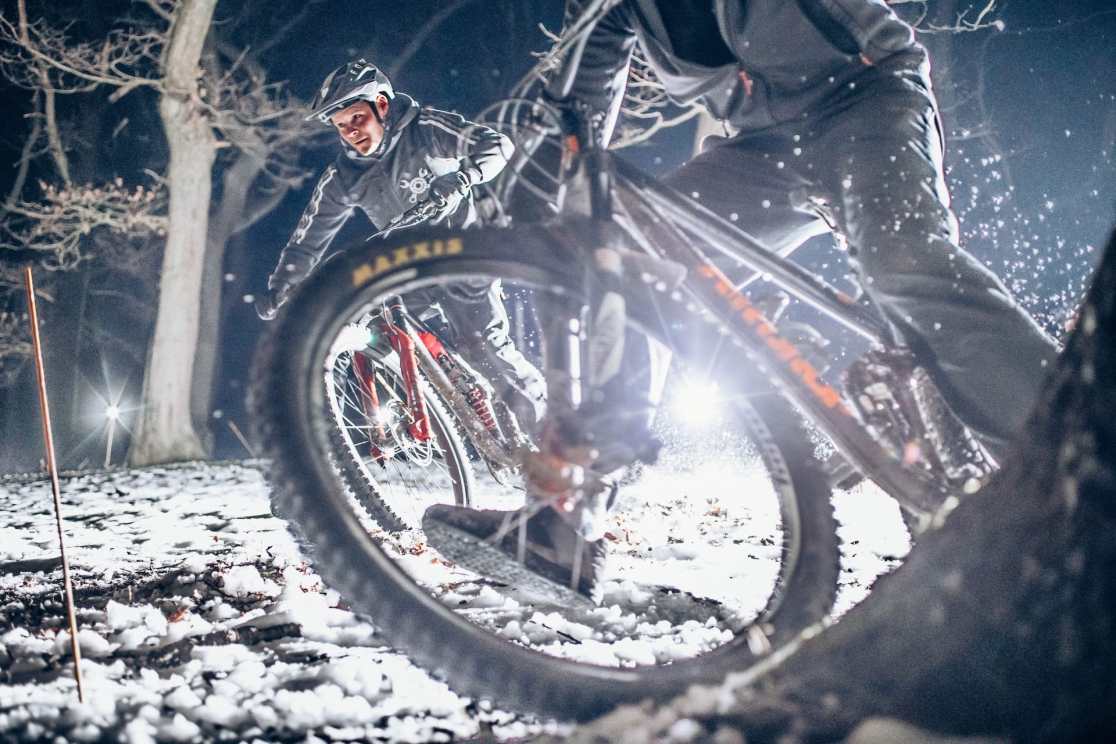
Fraternal support
Each Pearson cited ‘beating my brother’ as the best thing about Dual and one of them will always be called out as the ‘shit Pearson’ during prize-giving. However, Tim would ‘happily’ admit that Chris is the better trials rider and it’s those skills that Chris credits for his success at Dual. “Riding a trials bike teaches you all about timing on a bike; when to weight and unweight, braking and letting off. In trials you only get one chance to get it right, you get loads more practice at Dual.” Between runs, Chris is always out on track checking out lines and how the course is developing – you’ll often see him kicking a corner in just like he would on a trials course. “You have to ride instinctively, I’m on my bike all the time so muscle memory knows what to do. I’m used to a bike slipping sideways and know how to find grip, it transfers across all types of bike.” As testament to this, I can often be heard muttering ‘bloody trials riders’ as I get knocked out by them again.
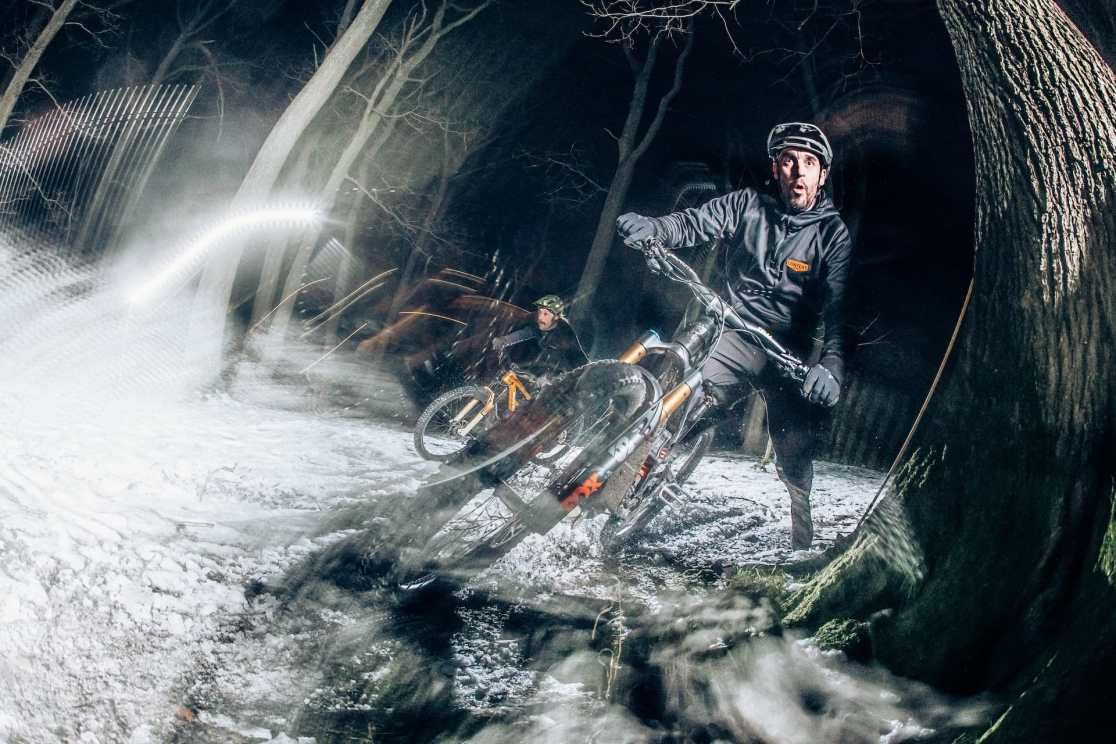
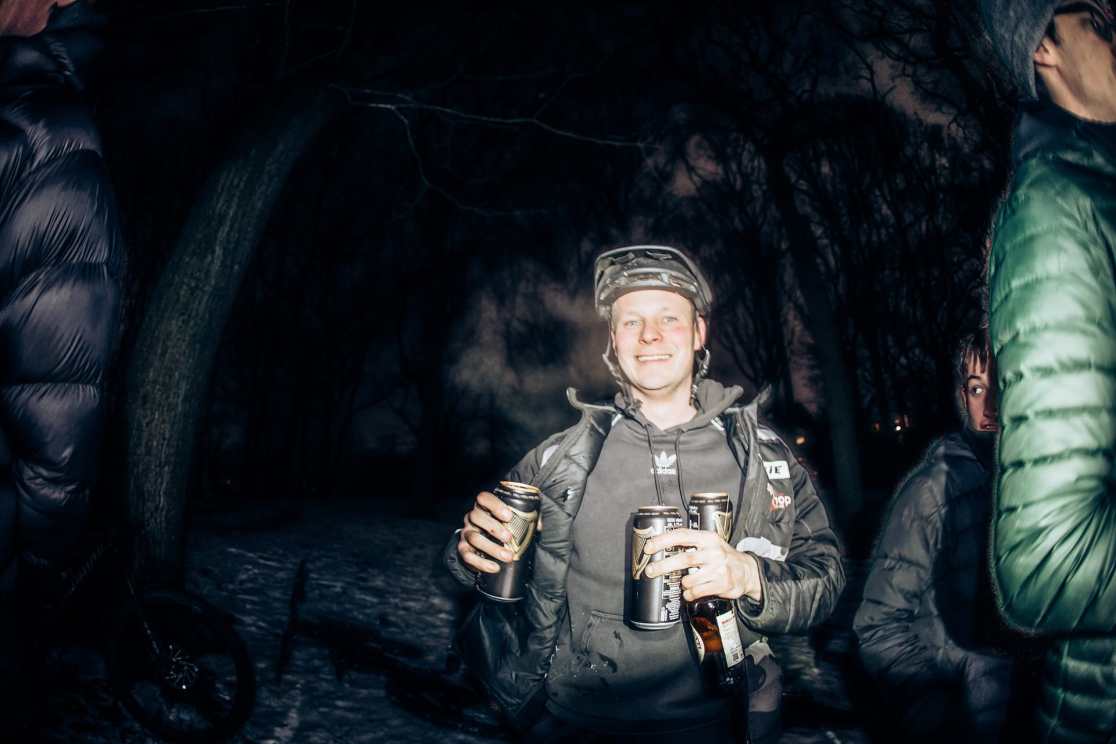
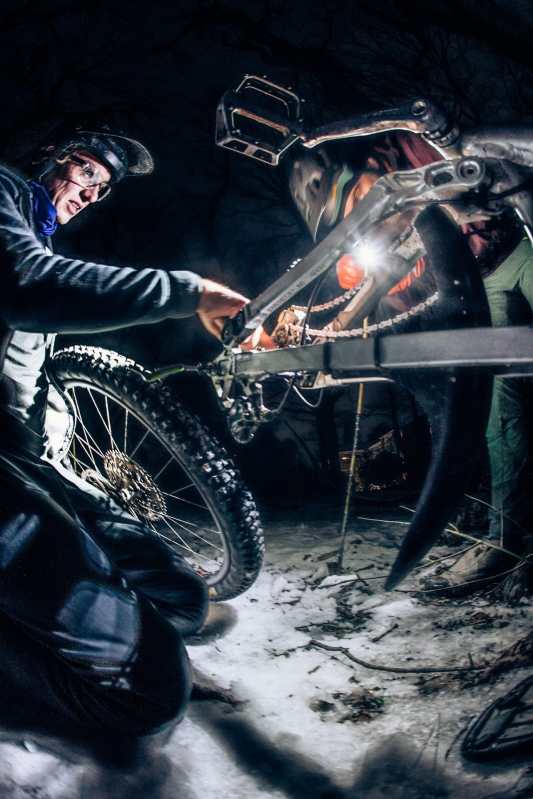
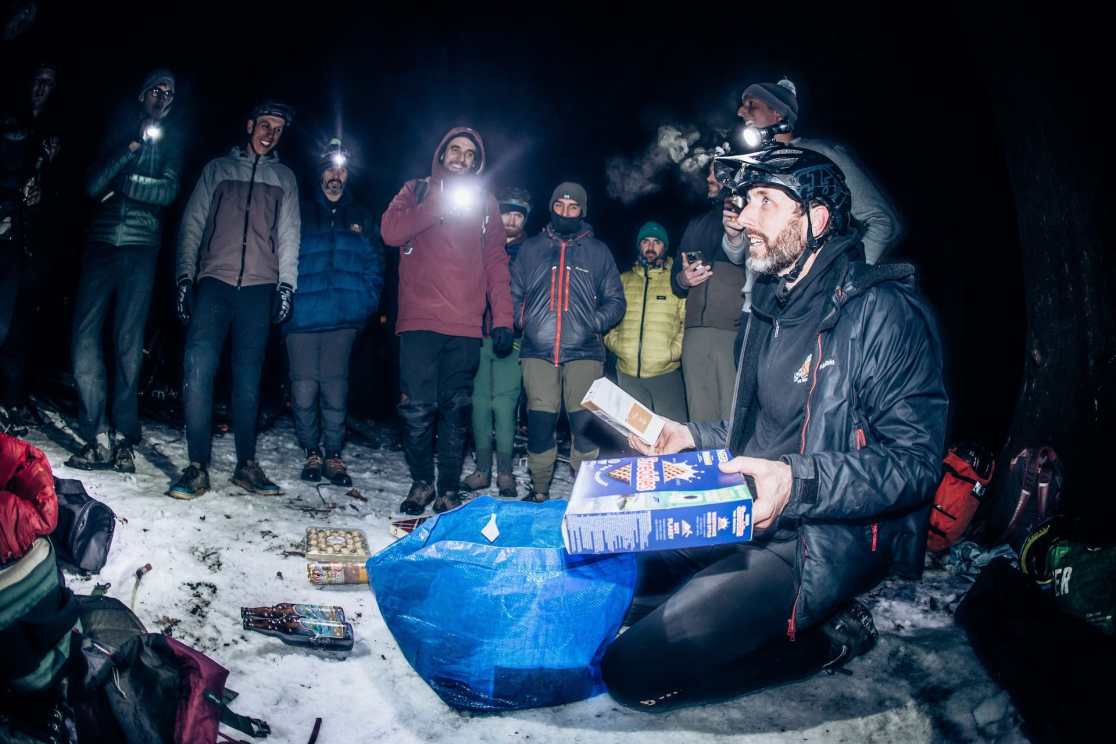
Prizes? Celebrations? Or preparations?
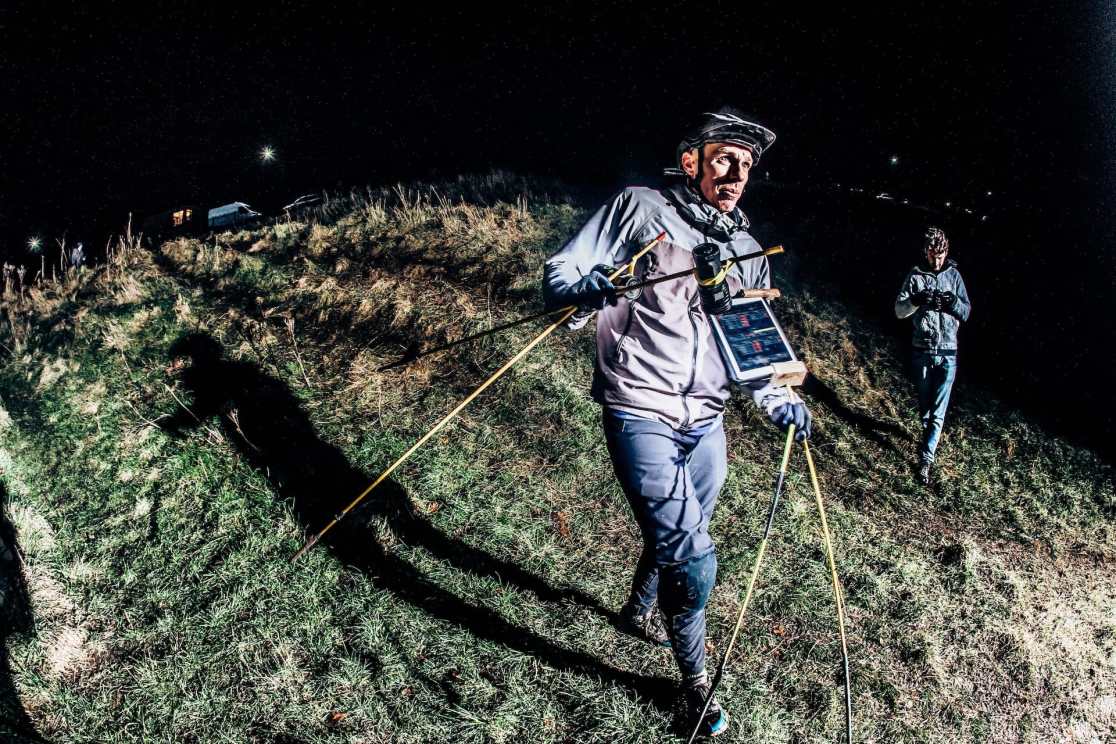
Poles and timing iPads – the mechanics of a good night out.
The sense of community that has grown up around Dual has had more profound effects than I ever realised before asking. For Chris Lansley (#203) the time between the posts with mates gave him what he needed in a tough period. “It was the winter of 2019, and my father-in-law was in hospital. I think we all knew this was the end. My wife had gone to be with him, leaving me in Sheffield, trying to be cheerful for the kids, but on the inside, there was a deep worry and a deep sadness. Leaving the kids with a babysitter, I headed up to Dual. The evening was never going to be about the racing – a good thing, as I never do well at Parkwood! – but about being with friends, being with people who’d ask me how I was doing, and offer sympathy and support when I told them exactly what was going on. It was an opportunity for me to relax the facade, to drop the act I’d been putting on for the kids. Sometimes it’s not about the ride.”
Mastering the terrain
The level of progression in people’s riding skills has been significant. Most of the time we are racing flat off-camber corners on surfaces with limited grip, at high speeds and under great stress. As Chris said, to do well at Dual you have to quickly master the combination of bike handling that allows you to lean the bike over and anticipate the slip, transferring your weight on the way through so you’re ready to get on the pedals if there’s room for a stroke or two. When it goes right, it feels amazing; when it doesn’t, well you’ve got a hillside of mates to remind you. Watching people’s riding evolve and adapt to the conditions has been really impressive and transfers nicely onto the trails.
In 2016, Sheffield received its first official Dual track commissioned by our true mayor, Jon Dallow of the Sheffield City Council. Jon has been responsible for much of the amazing official mountain biking infrastructure in the city and this addition to Parkwood Springs was a jewel in the crown. Its linked bermed corners, rhythm sections and high speeds added a completely new dimension to our locations roster. The skills required are different, which allowed another set of riders to prosper while the rest of us upskilled.
Unforced errors, easy smiles
What the simple format of Dual veils is the level of competition and commitment between the poles. Although it’s mandatory to give your opponent a friendly knucks before each run, the tension that builds as you wait to hear the starting whistle is palpable. The banter fades and the red mist descends. This might be a mates’ race but it is also the most serious racing we do. Although we are actually racing against the clock, there is something different about racing right next to another rider, rubbing shoulders, clipping elbows and exchanging banter. It causes fervent angst and stupid decisions, mistakes are made by even the best riders, try to keep your cool if you can. When they are in front of you, all you can see is when you might get that extra pedal stroke in to slip past. When they are behind you, your attention is in your periphery listening and looking for clues of where they might be. When they are next to you, there is no thought, just get past ’em at any cost.
So many unnecessary errors are made between the posts and those errors are never left unrewarded. Another joy of the format is that when you’re not racing, you’re spectating and Dual heckles have become refined over the years. A nicely timed heckle or shout of ‘Pedal’ at the right moment can raise panic levels perfectly, precipitating a very unnecessary mistake and peals of laughter and knowing smirks. We’ve all been there.
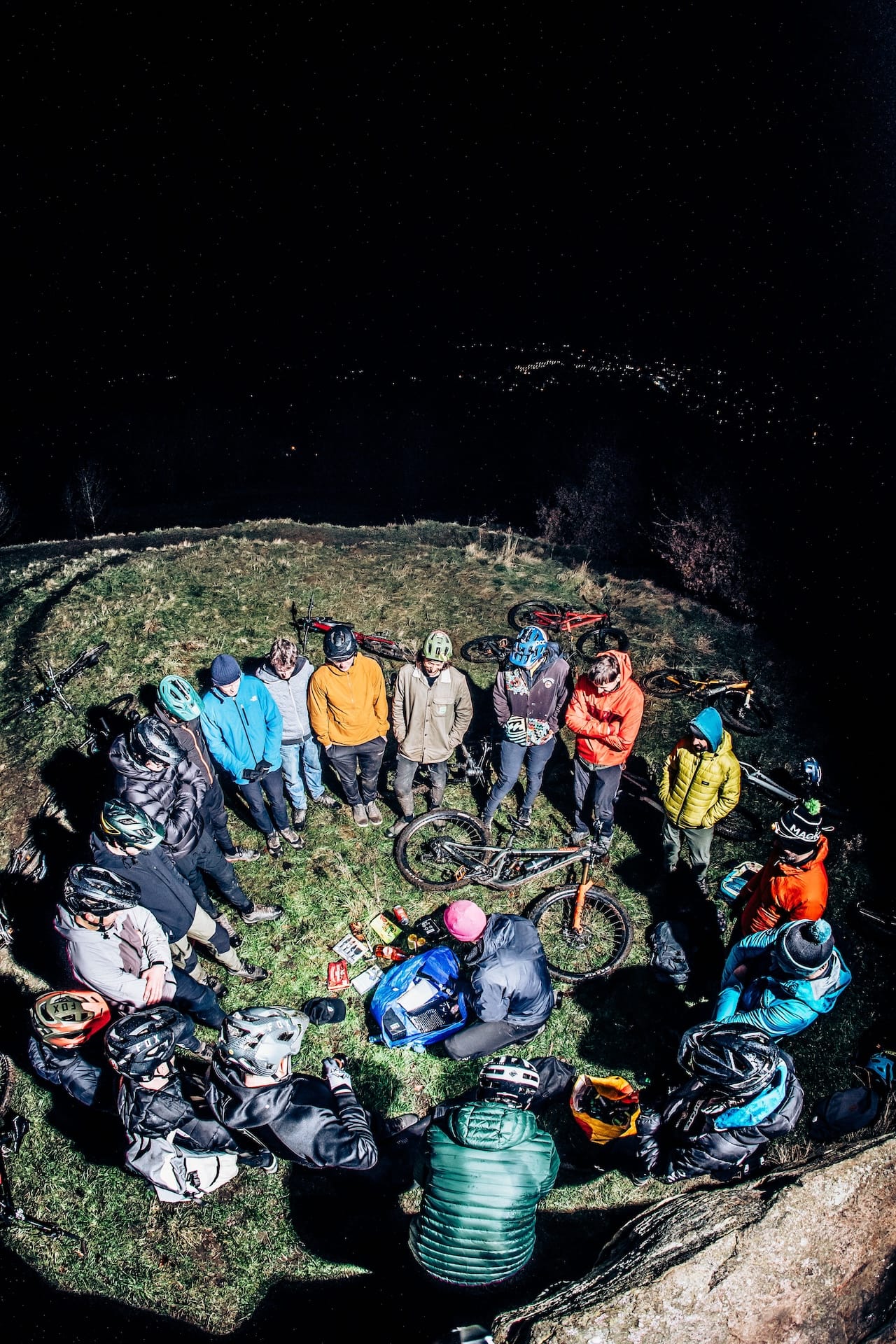
We challenge you to Dual
Hopefully, you’ve now got the idea of why you should Dual and what Dual is, but how should you now go forth and make it happen? My own experience began in 2009 at Steve Peat’s Wharncliffe Weekender. The crew had built a pimp new Dual track on Farmer Jack’s land but no one was stepping up to actually make the race happen. I stuck my head above the parapet and my fingers on the stopwatch. I knew nothing about Dual slalom racing but was instantly hooked by the immediacy and simplicity of the format. From there it was just a case of cutting down a few bits of overflow pipe for poles, inviting a bunch of mates to our local park and getting the stopwatches out. It really is that simple. We’ve raced with as few as ten people and it’s still just as much fun – the format is incredibly robust. For that few, we introduced a round-robin group stage meaning that everyone gets more race runs before the knockout stage.
Why does Dual rule? Peaty puts it down to three things: “It’s a short track, with intense racing and you get two goes.” So, what are you waiting for? Go grab a few mates, nab some cheap poles, and slap some lights onto whatever you can find. You don’t need a fancy track, just a patch of dirt, grass, or even a polished warehouse floor. It’s the perfect excuse to get out, ride hard, and laugh even harder all through winter. You’ll get better on the bike, make new friends, and maybe even bag a tin of mackerel for your troubles. Just remember the golden rule – no dicks. We’ve got enough of those already. So go on, get dualin’ – you won’t regret it.
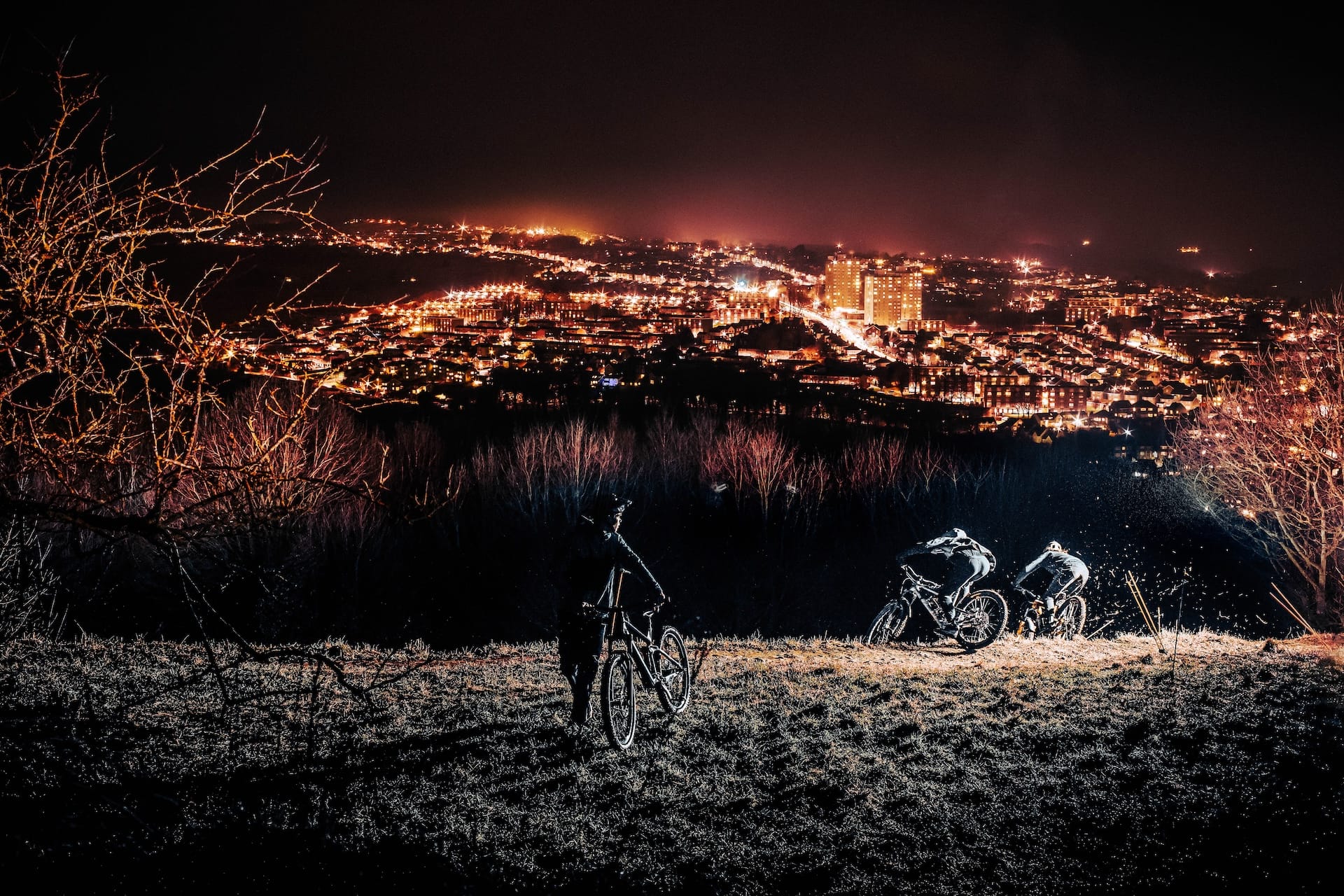
Rules of Dual
- Dual Slalom is an elbow-to-elbow, knockout race format.
- Each pair of riders races twice, once in each lane negotiating the obstacles.
- The rider with the fastest combined time will move through to the next round.
- Riders are seeded so that the fastest faces the fastest in the first round.
- You must Knucks your opponent before racing starts.
- You will hear two whistles; you go on the second whistle.
- The rider with the lowest number starts in the left lane.
- If a rider falls in their first run, their time becomes that of their opponents plus 1.5 seconds. This gives them a chance for a comeback.
- There is a round of 32, then 16, the quarter-finals with 8 riders, and semi-finals with 4.
- The winners of the semis meet in the big final, and the losers race for 3rd place in the small final.
- If a rider misses a gate they are disqualified.
- All riders will receive a prize from the pile and the winners get to pick first.
Follow our antics on Instagram @thisisheffield and if you’re dualing, invite us along.





I really should join in with this. I could probably pedal to most of the venues after Junior has gone to sleep.